Alps greet one en route.
Austria’s second-largest city hides in an out-of-the-way corner of central Europe. Austria’s four other cities (Vienna, Linz, Salzburg, Innsbruck) line up horizontally across the oblong Alpine country, all connected by high-speed rail. Graz sits off by itself to the south, and so I’d never visited—until this past spring. It wasn’t quite a ‘revelation,’ but it was a lot of fun. A city of contrasts, Graz is known for both modern and historic architecture, culture, and food.
With a population of about 300,000 and more than twice that in its metro area, Graz has a small airport (I flew in from Germany) and is also connected by Austria’s high speed RailJet trains to Vienna and Salzburg.
That famous clock tower and an overview of the old town.
The Kunsthaus, seen from Schlossberg.
Sights, Architecture- Graz’s tiled-roof old town is a UNESCO Heritage site. The town as a whole is a UNESCO ‘city of design,’ and examples of its ultra-modern face sit alongside its history. This could be jarring, but here, somehow they seem to fit together.
The old town surrounds a big hill, Schlossberg, which used to house a big fortress (Napoleon took care of that—via treaty, not by force). What remains is its famed clock tower, one of a couple of local landmarks that are instantly recognizable. The other two are the hyper-modern Kunsthaus, which hovers like an alien ship just across the river, and the Murinsel pavilion in the middle of river that serves as both a café and a performance space. [Seen below: Old town sights.]
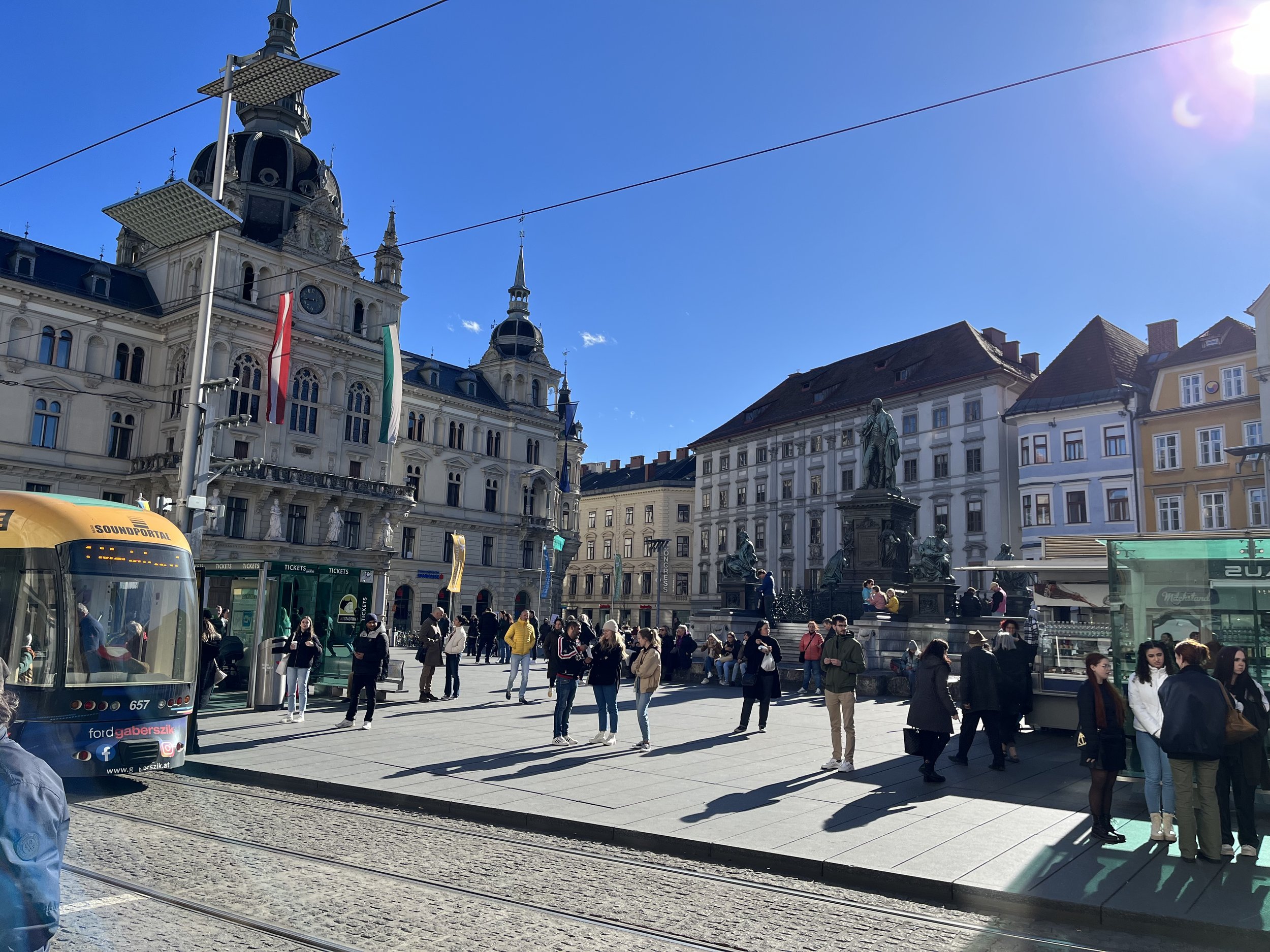


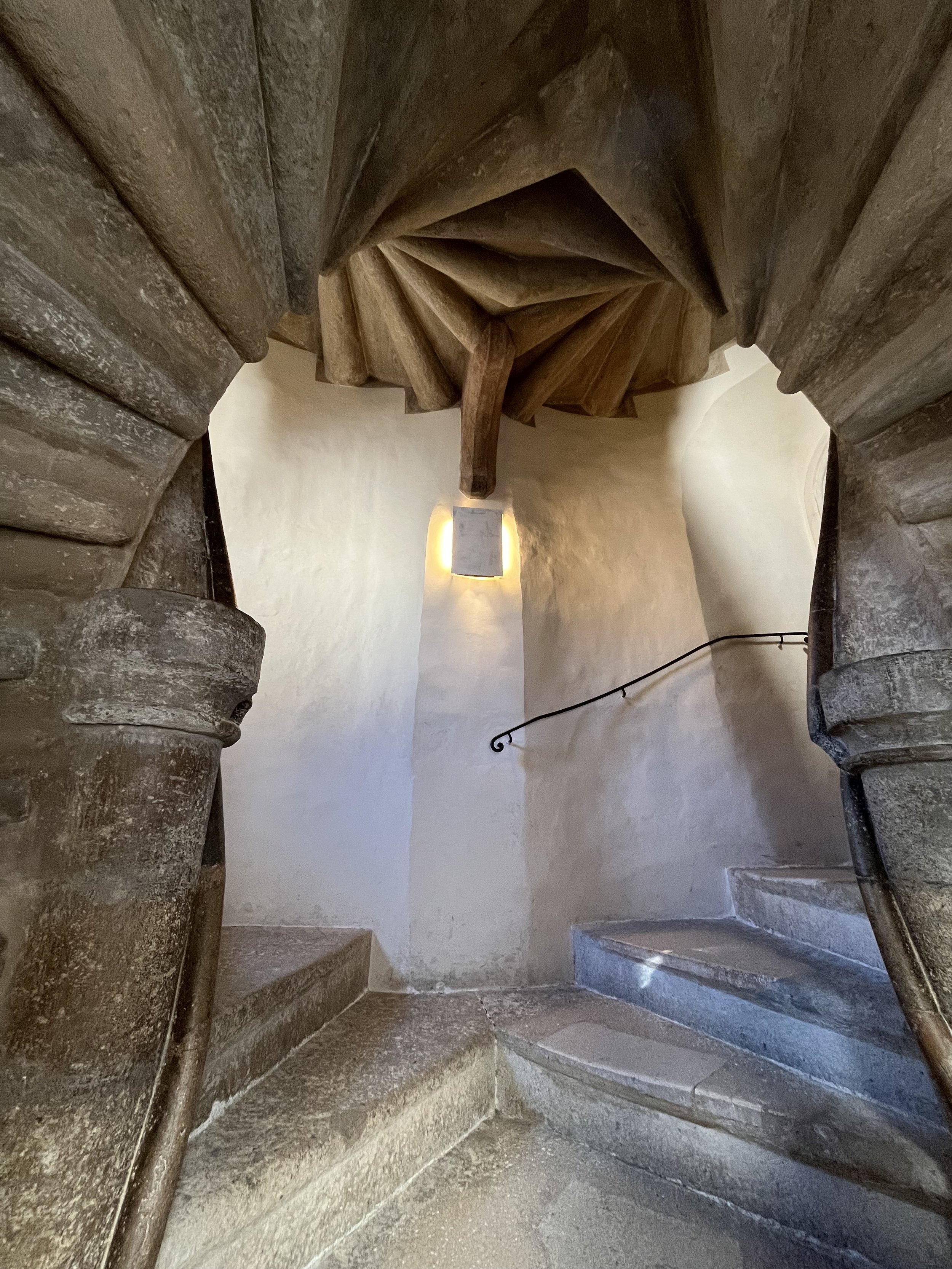
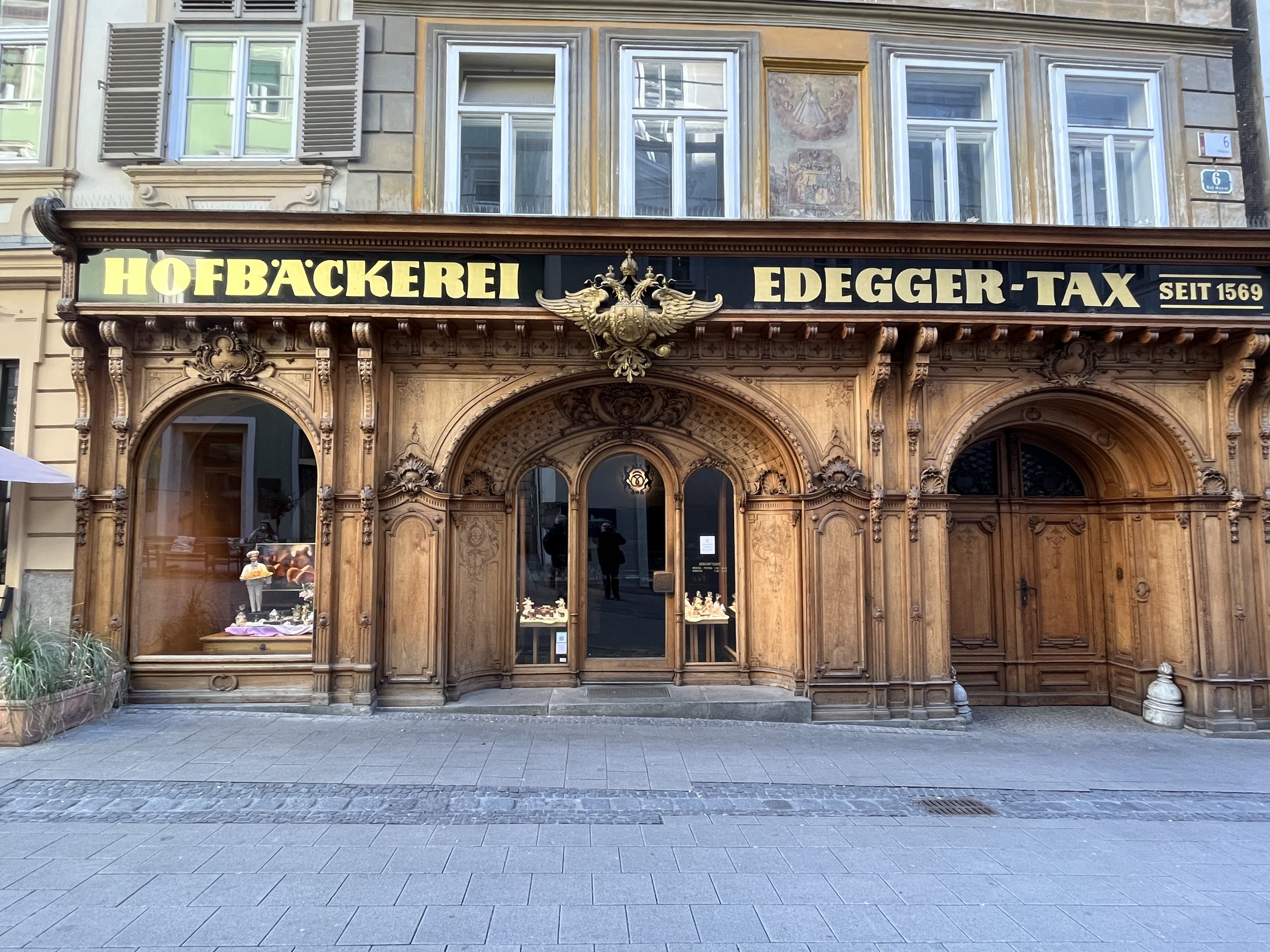
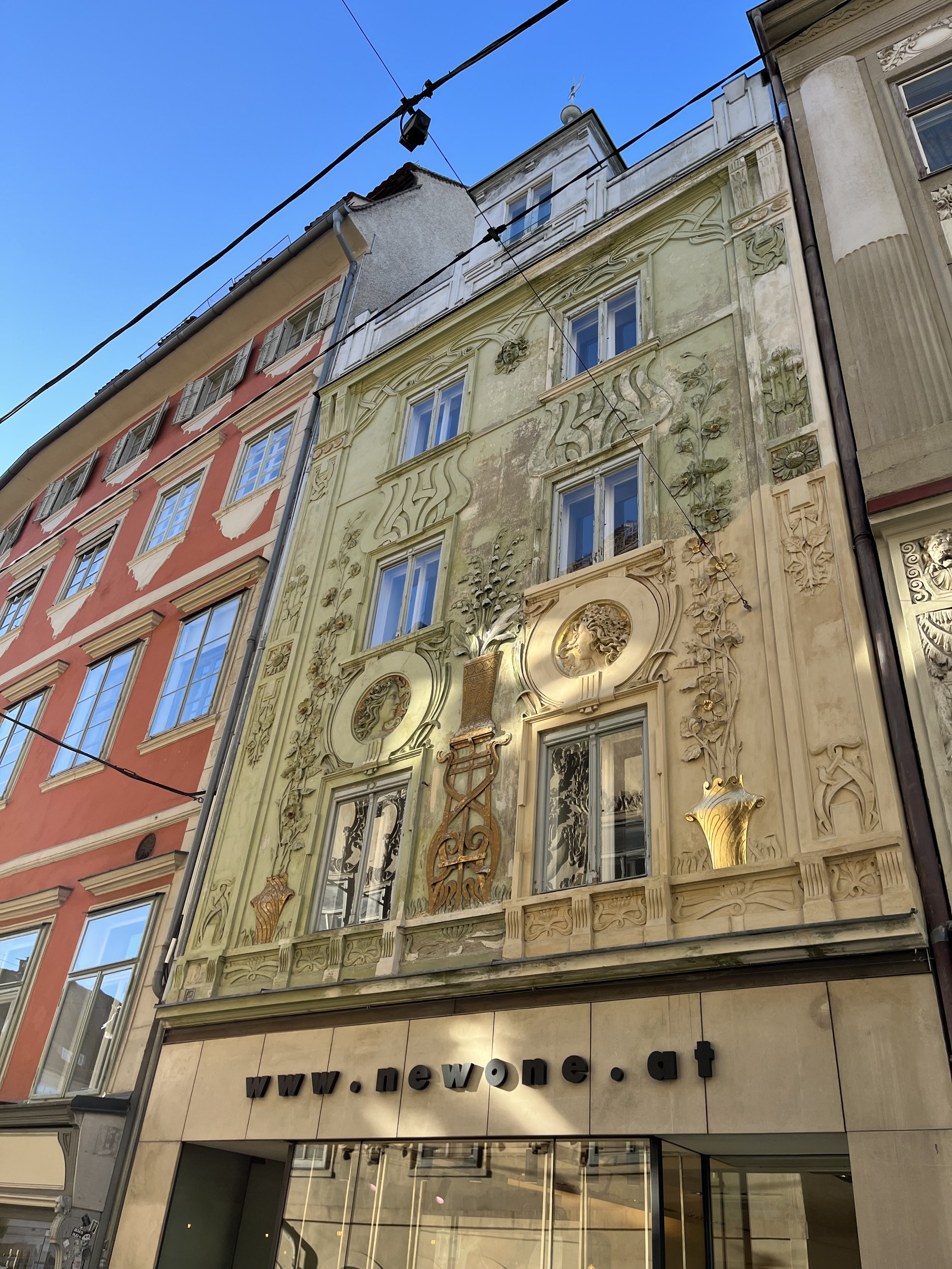
Plaque marking the birthplace of Franz Ferdinand (the archduke, not the band).
Journey up Schlossberg via elevator, funicular, or foot. Take in the views across the city and the clock tower, and grab lunch or a snack. (You can return by any of these means—or a big slide!) Back down in the old town, seek out the main square, Landhaus, and the famous double-spiral staircase in Graz Castle seen above.
Keep an eye out for a plaque designating the birth place of Franz Ferdinand, whose assassination would drag Europe into war—and end the Austro-Hungarian Empire.
One more modern marvel to check off: Zaha Hadid’s Argos apartment building. [For more on Graz’s architecture, see here. ]
Like Salzburg, Graz invites strolling, whether through the old town, along the river, or through one of its parks. [Seen below: Murinsel (x2), Kunsthaus, Argos building.]


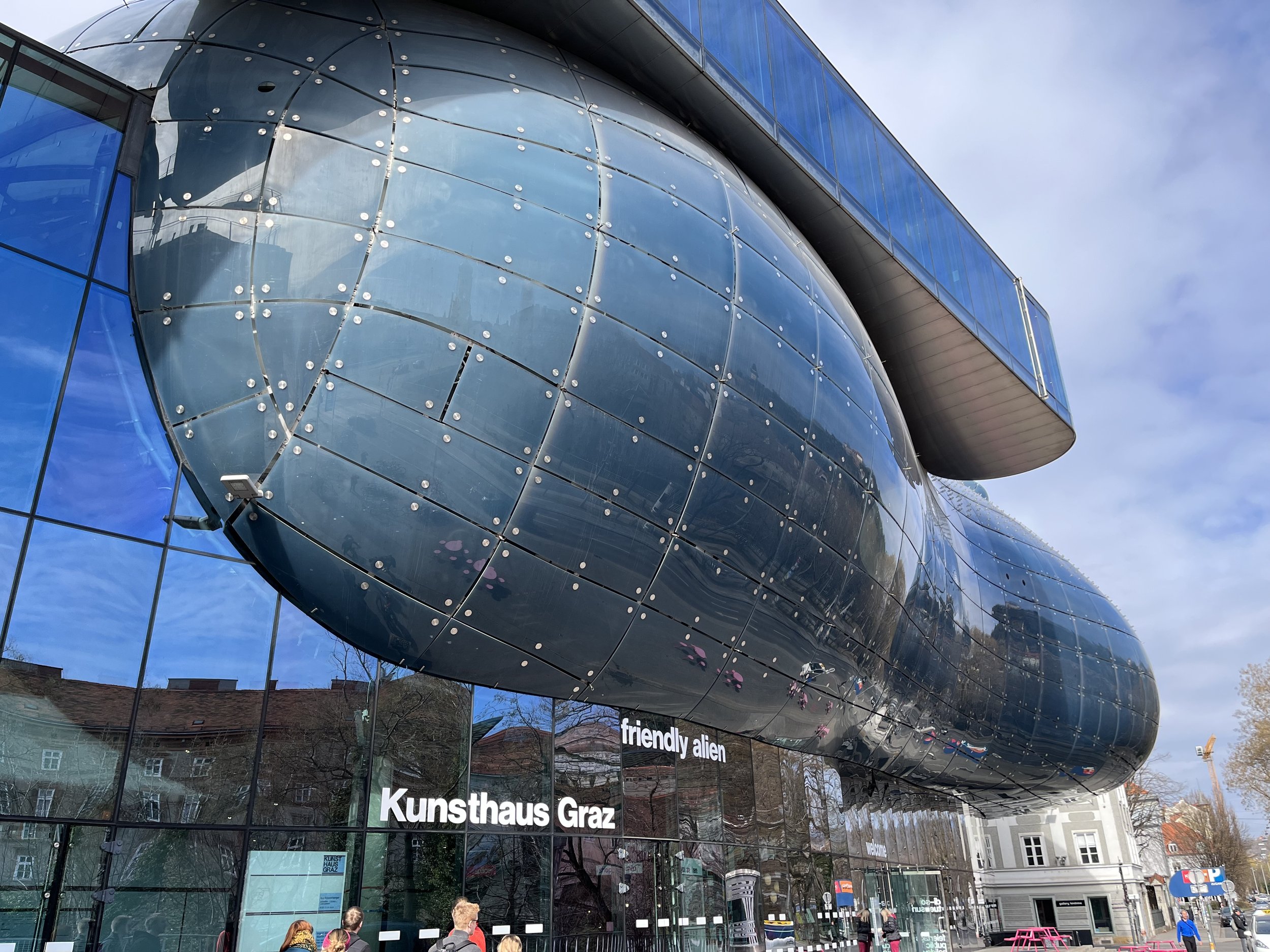
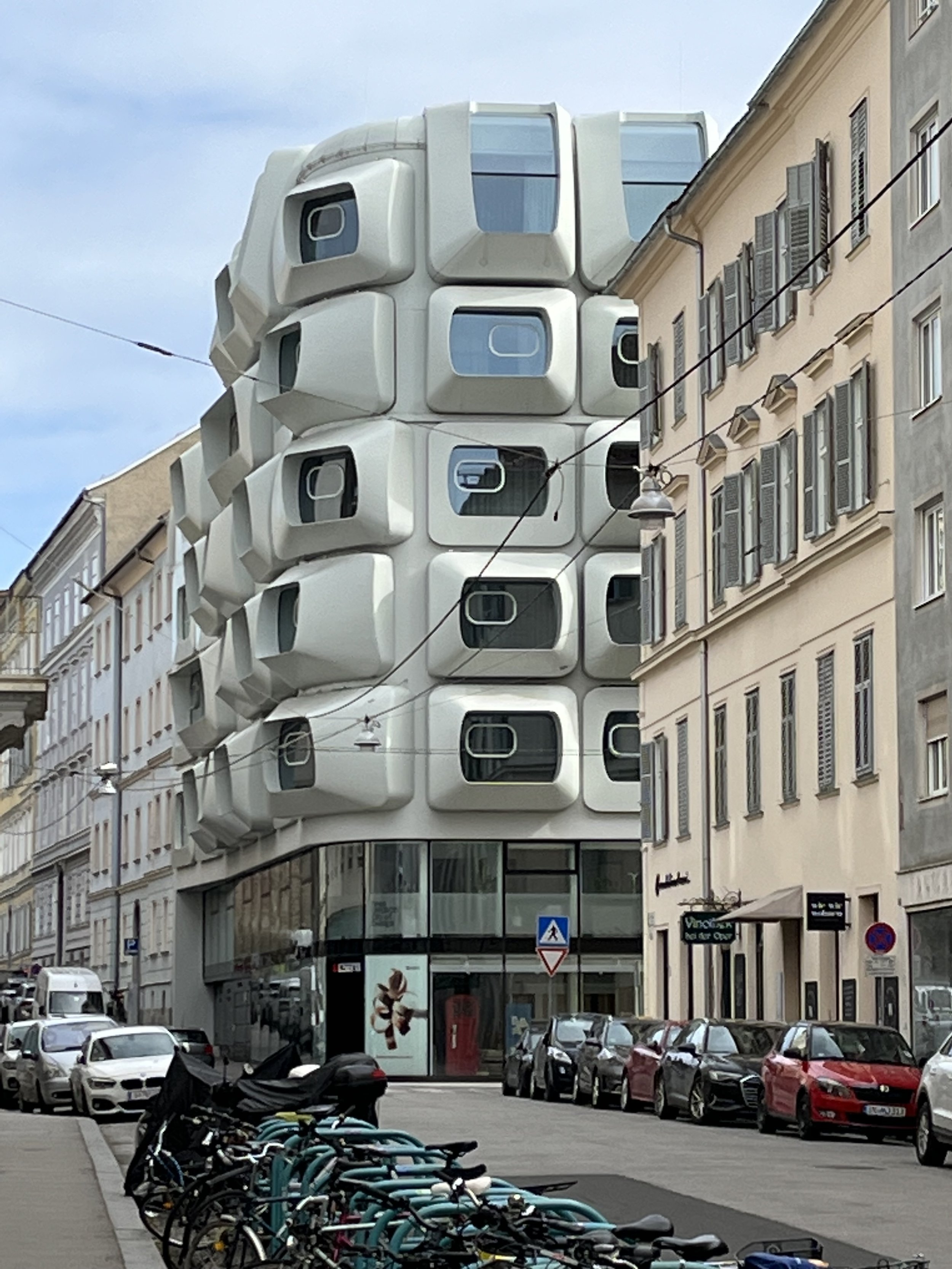
The main atrium of Kastner + Öhler. V fancy.
Shopping- Graz is also home to a terrific department store, the 150-year-old Kastner and Öhler, one of my very favorite in Europe, and also a slew of quirky shops in its old town. K+O sprawls over several levels and includes multiple restaurants, stores-within-the-store, and a big Eurostar within its complex. It also offers a wide spread of price points (at least in menswear); it’s not so off-putting as some other big department stores I could name, and the staff were helpful, not snooty.
Food- Billed as the culinary capital of Austria (Salzburg and Vienna might beg to differ), Graz adds its regional Styrian cuisine to the usual mix of Austrian dishes and. My contact there gave me more restaurants than I could fit into a short stay—but all the ones I tried, I liked. [I’ve got some good restaurant recs, reserved for my clients. Lodging and guide also. Seen below: Styrian cuisine including roasted chicken, dessert, dessert, and a different take on ‘Tafelspitz’ (Austrian boiled beef). ]

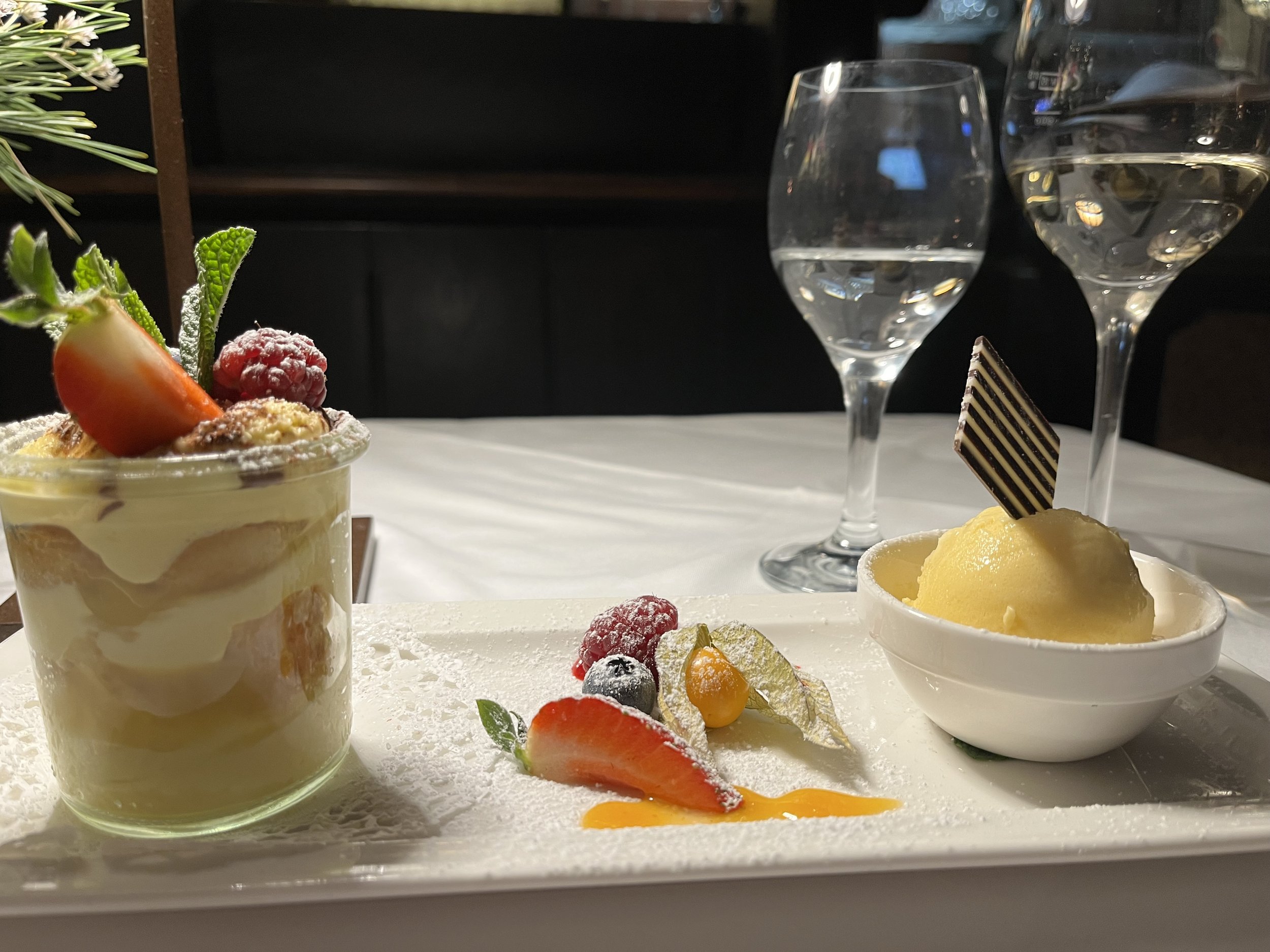

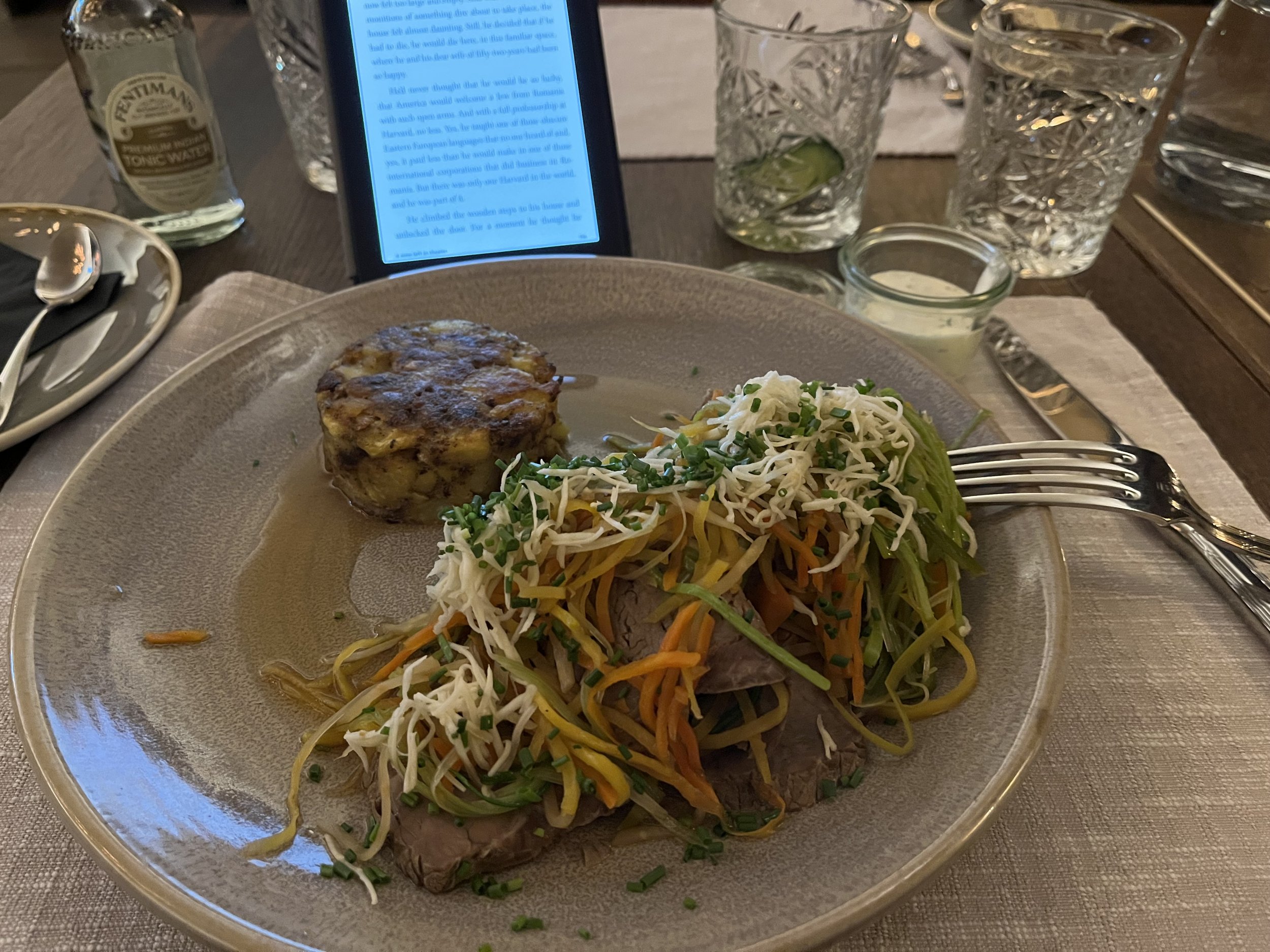


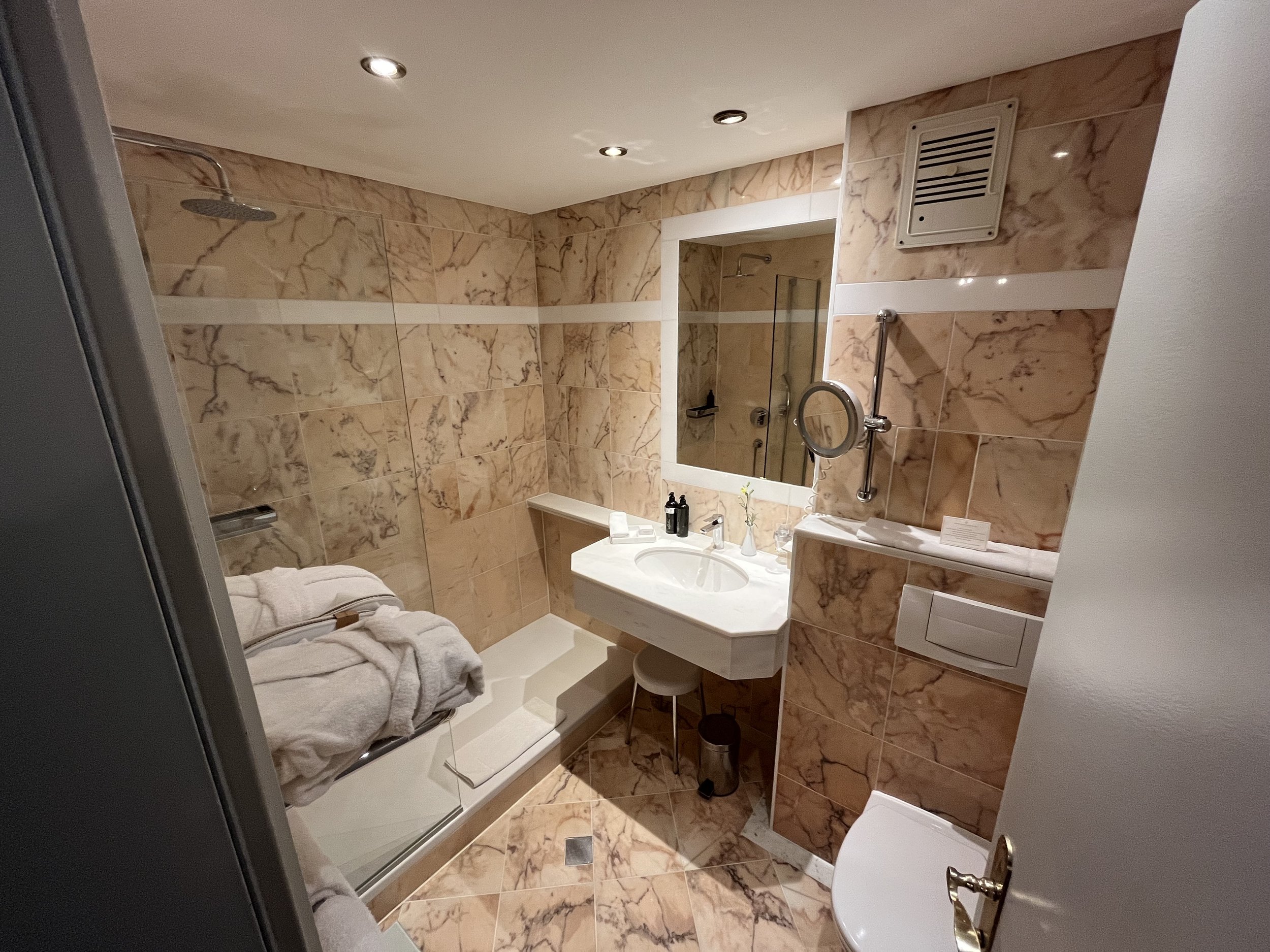
For next time- Schloss Eggenberg was closed when I visited—that’s on my list for the next visit. It’s Graz’s other UNESCO world heritage site. So is getting out into the countryside and maybe hitting one of the wineries in the hills surrounding Graz.
[Gallery: my lodging, a traditional Austrian hotel in the heart of the old town.]
‘Next time’ of course implies there will be a return trip—and I expect there will be. Graz doesn’t have the flash of some other European cities, and that’s just fine with me. Its quieter charms serve as a nice break from the rush of Vienna and the crowds of Salzburg. Maybe it’s calling your name, too. If it is, call me (or email me).







